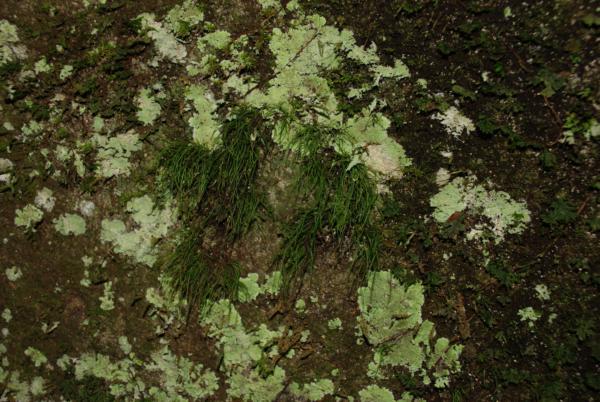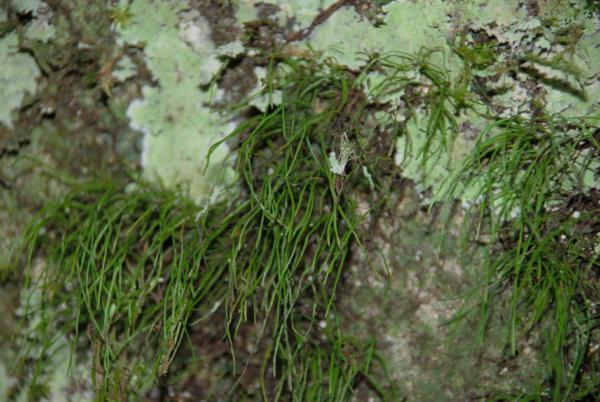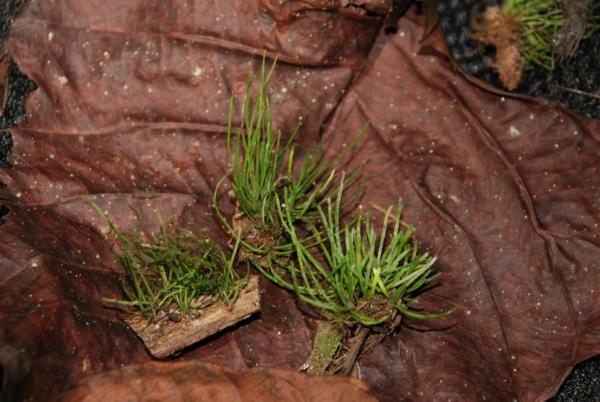
Vaginularia trichoidea Fée
Family
Pteridaceae, subfamily Vittarioideae
Nomenclature
Vaginularia trichoidea Fée, Mém. Foug., 3. Hist. Vittar. 54. 1852; Tagawa & K.Iwats., SouthE. Asian Stud. 3(3): 89. 1965; Tagawa & K.Iwats., SouthE. Asian Stud. 5: 112. 1967; Tagawa & K.Iwats., Fl. Thailand 3: 229, f. 17.4. 1985; Boonkerd & Pollawatn, Pterid. Thailand: 134. 2000. – Monogramma trichoidea (Fée) J.Sm. ex Hook. & Baker, Syn. Fil. 375. 1868; Holttum, Rev. Fl. Malaya ed. 1, 2: 616, f. 362. 1955 [‘1954’].
Description
Rhizome slender, about 0.2 mm diam., bearing close-set fronds, scaly throughout; scales narrowly subtriangular, hair-pointed, up to 2 by 0.4 mm, brown, clathrate, minutely toothed at margin. Stipes not distinct. Frond minute; filamentous, up to 6 cm long, 0.3 mm broad in sterile portion, thin, with a single costa and few short lateral veins in soriferous portion. Sori in a single row, up to 5 mm long, 1.5 times broader than the sterile portion of frond, one to few on a single frond; paraphyses filamentous .
Distribution in Thailand
PENINSULAR: Nakhon Si Thammarat, Trang.
Wider Distribution
W Malesia.
Ecology
On muddy moist rocks by streams in dense evergreen forests at low or medium altitudes.
Proposed IUCN Conservation Assessment
Least Concern (LC). This species is widespread and not under any known threat.
Habit
Habit
Whole plants
Site hosted by the Royal Botanic Garden Edinburgh. Content managed by Stuart Lindsay, Gardens by the Bay, Singapore and David Middleton, Singapore Botanic Gardens. Last updated 24 January 2012


